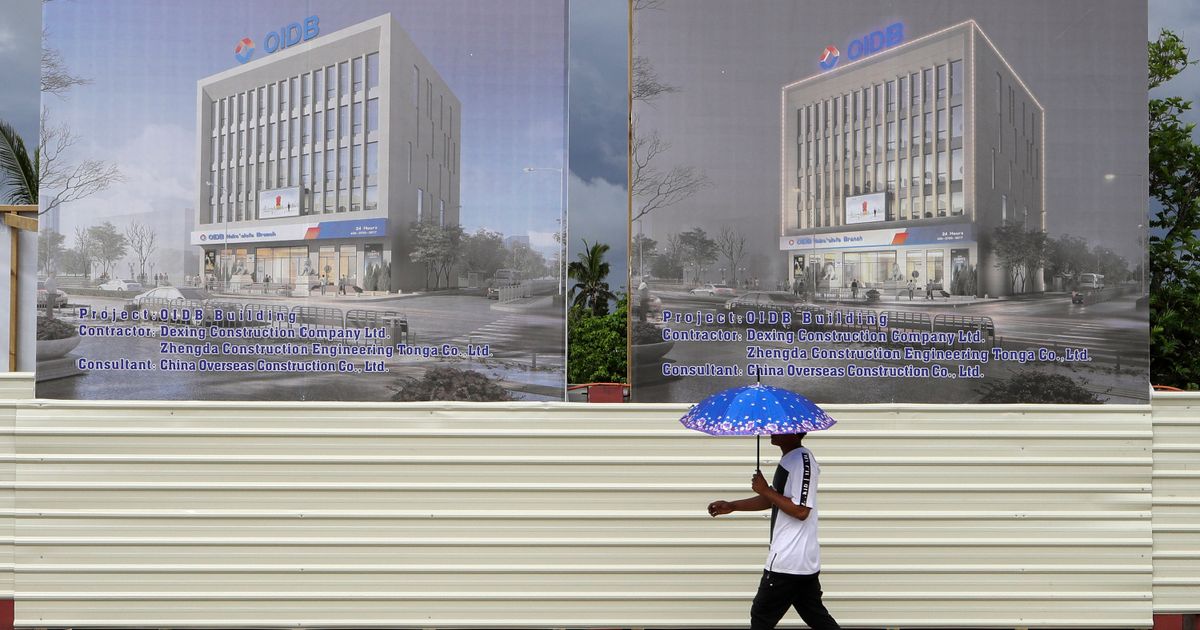‘Only God can help’: Hundreds die as Somalia faces famine

Ali Osman, 3, who has symptoms of Kwashiorkor, severe protein malnutrition causing swelling and skin lesions, is weighed at a Malnutrition Stabilization Center run by Action Against Hunger, in Mogadishu, Somalia, on Sunday June 5, 2022. Deaths have begun in the region’s driest drought in decades and never-before-seen data shows nearly 450 deaths this year at malnutrition treatment centers in Somalia alone. (AP Photo/Farah Abdi Warsameh)
PA
MOGADISHU, Somalia
No mother should have to lose her child. Owliyo Hassan Salaad has seen four die this year. A drought in the Horn of Africa took them one by one.
Now she cradles her frail, screaming 3-year-old child, Ali Osman, whom she carried on a 90-kilometre (55-mile) walk from her village to the Somali capital, desperate not to lose him too. Sitting on the floor of a malnutrition treatment center filled with anxious mothers, she can barely speak of the small bodies buried at home in soil too dry to plant.
The deaths began in the region’s driest drought in four decades. Previously unreported data shared with The Associated Press shows at least 448 deaths this year in malnutrition treatment centers in Somalia alone. Authorities in Somalia, Ethiopia and Kenya are now turning to the grim task of trying to avert famine.
Many more people are dying without the authorities noticing, such as Salaad’s four children, all under the age of 10. Some die in remote pastoral communities. Some die while hiking for help. Some even die after reaching IDP camps, suffering from malnutrition beyond aid.
“Certainly thousands” have died, the UN’s humanitarian coordinator for Somalia, Adam Abdelmoula, told reporters on Tuesday, although supporting data is yet to come.
Salaad left four other children with her husband. They were too weak to make the trip to Mogadishu, she said.
Drought comes and goes in the Horn of Africa, but this one is not like the others. Humanitarian aid has been undermined by global crises like the COVID-19 pandemic and now Russia’s war in Ukraine. Prices for basic commodities like wheat and cooking oil are rising rapidly, in some places by more than 100%. Millions of cattle that provide families with milk, meat and wealth are dead. Even therapeutic food to treat starving people like Salaad’s son is getting more and more expensive and, in some places, could run out.
And for the first time, a fifth consecutive rainy season could fail.
An “explosion of child deaths” is coming to the Horn of Africa if the world focuses solely on the war in Ukraine and does not act now, UNICEF said on Tuesday.
Famine even threatens the Somali capital as displacement camps on the outskirts of Mogadishu fill with exhausted new arrivals. Salaad and his son were turned away from a crowded hospital after arriving a week ago.
Instead, they have been sent to the treatment center for the extremely malnourished where the rooms are full, extra beds have been put in and yet some people have to sleep on the floor. Mothers wince and babies groan, as tiny bodies with wounds and protruding ribs are gently examined for signs of recovery.
“The center is overwhelmed,” said Dr Mustaf Yusuf, a doctor on site. Admissions more than doubled in May to 122 patients.
At least 30 people have died this year through April at the center and six other facilities run by Action Against Hunger, the aid group said. It has had the highest admission rates to its hunger treatment centers since it began working in Somalia in 1992, with the number of severely malnourished children increasing by 55% compared to last year.
More broadly, at least 448 people have died this year in outpatient and inpatient malnutrition treatment centers across Somalia up to April, according to data compiled by aid groups and local authorities.
Aid workers warn that data is incomplete and the overall death toll from the drought remains elusive.
“We know from experience that mortality suddenly increases when all the conditions are right – displacement, epidemics, malnutrition – all of which we are seeing in Somalia right now,” said Biram Ndiaye, UNICEF Somalia’s Head of Nutrition.
Mortality surveys carried out in parts of Somalia in December and again in April and May by the United Nations Food Security and Nutrition Analysis Unit showed “serious and rapid deterioration in a period of very short time”. Most alarming was the Bay region in the south, where adult mortality nearly tripled, child mortality more than doubled and the most severe malnutrition rate tripled.
Deaths and acute malnutrition have reached “abnormally high levels” in much of southern and central Somalia, and admissions of children under 5 with acute malnutrition have increased by more than 40% per year. compared to the same period last year, according to the Famine Early Warning Systems Network.
A notable complication in the death count is the extremist group al-Shabab, whose control over large parts of southern and central Somalia is an obstacle to aid. Its brutal response to the drought-induced famine in Somalia from 2010 to 2012 resulted in more than a quarter of a million deaths, half of them children.
Another factor has been the slow response from the international community. “A drama without witnesses,” said the UN humanitarian coordinator for Somalia at the time.
Now the alarms are ringing again.
More than 200,000 people in Somalia face “catastrophic hunger and starvation, a drastic increase from the 81,000 expected in April”, a joint statement by UN agencies said on Monday, noting that a plan to humanitarian response for this year is only 18% funded.
Somalia is not alone. In drought-stricken areas of Ethiopia, the number of children treated for the most severe malnutrition — ‘a peak of the crisis’ — jumped 27% in the first quarter of this year compared to last year, according to UNICEF. The increase was 71%. in Kenya, where Doctors Without Borders reported at least 11 deaths in a single county’s malnutrition treatment program earlier this year.
In one of the overwhelmed displacement camps on the outskirts of Mogadishu, new arrivals were anguished as they described the deaths of family members.
“I left some of my children behind to take care of those who are suffering,” said Amina Abdi Hassan, who came from a village in southern Somalia with her malnourished baby. They are still hungry as aid dries up, even in the capital.
“Many more are on the way,” she said.
Hawa Abdi Osman said she had lost children to the drought. Thin and weakened by another pregnancy, she walked for five days to Mogadishu.
“We had to leave some of our loved ones behind, and others perished before our eyes,” said her cousin, Halima Ali Dhubow.
Every day more and more people come to the camp, using the last glimmers of energy to set up makeshift shelters in the dust, tying down branches with fabric and plastic. Some walked for up to 19 days to reach the capital, according to the Norwegian Refugee Council.
“Last night alone, 120 families came,” camp manager Nadifa Hussein said. “We give them all the little supplies we have, like bread. The number of people is so overwhelming that helping them is beyond our ability. In the past, aid agencies helped, but now help is very scarce.
“Only God can help them,” she said.
___
Cara Anna reported from Nairobi, Kenya. Edith M. Lederer of the United Nations contributed to this report.




